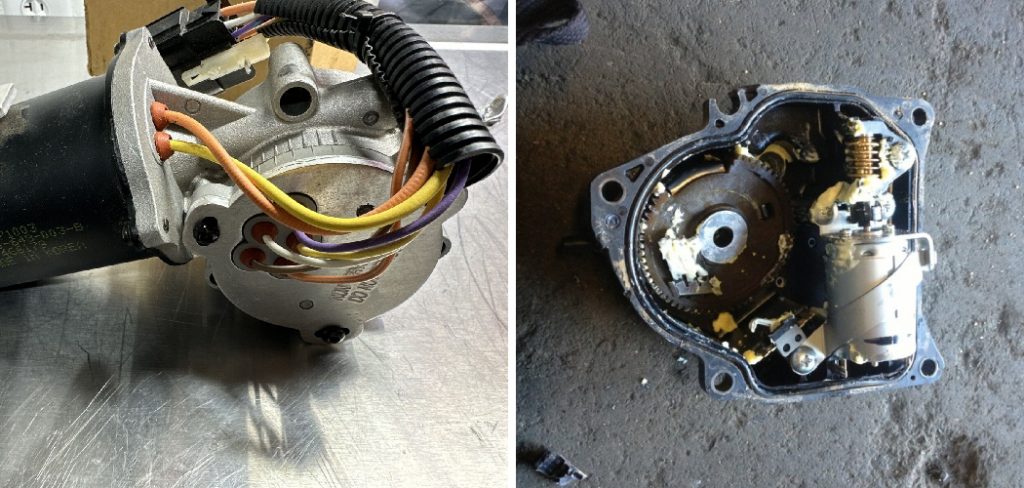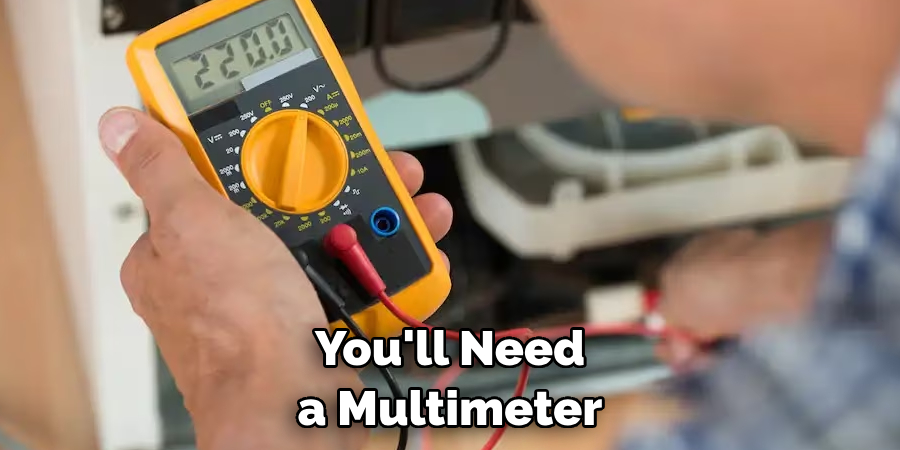If you own a 4WD vehicle, then it’s important to keep your 4WD actuator in top shape. The 4WD actuator is responsible for engaging and disengaging your vehicle’s four-wheel drive system, so if it’s not working properly, it can cause a number of issues. However, it can be difficult to tell if your 4WD actuator is bad, especially if you’re not familiar with how it works. In this blog post, we’ll give you a comprehensive guide on how to tell if 4wd actuator is bad, as well as some tips on how to fix it.

Can You Identify if 4WD Actuator Is Bad?
As you head off on your next off-road adventure, you want to make sure your vehicle is in top condition. One important part to keep an eye on is the 4WD actuator, as it plays a crucial role in engaging your four-wheel drive system. But how can you tell if it’s malfunctioning?
Signs of a bad 4WD actuator include difficulty engaging in four-wheel drive, grinding noises when switching between modes, or a blinking 4WD light on your dashboard. If you notice any of these issues, it’s important to get your vehicle checked out by a professional mechanic before your next venture off the beaten path.
Why Should You Identify If a 4WD Actuator Is Bad?
When it comes to driving off-road, having a 4-wheel drive (4WD) vehicle is essential. With the proper functioning of the 4WD actuator, your vehicle’s transfer case engages all four wheels at once, giving you the necessary traction to navigate even the toughest terrains. However, if the 4WD actuator goes bad, you risk getting stuck or stranded in unfavorable conditions.
Identifying a bad actuator can save you a lot of trouble and money in repairs down the line. So, don’t take any chances. Make sure you recognize the symptoms of a bad 4WD actuator, such as difficulty shifting into 4WD, strange noises from the transfer case, or a dashboard warning light. It’s better to be safe than sorry when it comes to your off-road adventures.
How to Tell if 4WD Actuator Is Bad: A Comprehensive Guide
1. Understanding the 4WD Actuator
Before we delve into how to tell if your 4WD actuator is bad, it’s important to understand what it does. A 4WD actuator is an electronic or vacuum-controlled device that engages and disengages your vehicle’s four-wheel drive system. When you engage your four-wheel drive, the actuator sends a signal to your transfer case to send power to both the front and rear wheels. If the actuator isn’t functioning properly, it can cause problems with your vehicle’s four-wheel drive system.
2. Symptoms of a Bad 4WD Actuator
Several symptoms can indicate a bad 4WD actuator, including:
- Difficulty engaging or disengaging four-wheel drive
- Grinding noises when you try to engage four-wheel drive
- Four-wheel drive won’t engage at all
- Four-wheel drive engages but then disengages on its own
- Illuminated 4WD warning light on your dashboard
If you’re experiencing any of these symptoms, it’s worth checking your 4WD actuator to see if it’s the culprit.
3. Test Your 4WD Actuator
To test your 4WD actuator, you’ll need a multimeter and a helper to engage and disengage your four-wheel drive. Start by disconnecting the actuator and checking its resistance. The resistance should be between 30 and 40 ohms. If the resistance is outside of this range, then your actuator is likely faulty.

Next, have your helper engage and disengage your four-wheel drive while you check for voltage at the actuator. If there’s no voltage present, then it’s likely that your actuator isn’t receiving the signal to engage. If there is voltage present, but your actuator still isn’t engaging, then it’s probably faulty.
4. Check for Vacuum Leaks
If your vehicle uses a vacuum-controlled actuator, then it’s important to check for any vacuum leaks. A vacuum leak can prevent the actuator from functioning properly and cause issues with engaging and disengaging four-wheel drive. You can use a smoke machine or simply spray soapy water around the vacuum lines to identify any leaks. If you find a leak, it’s important to fix it before replacing the actuator.
5. Replace the Actuator
If all else fails and your 4WD actuator is indeed faulty, then it’s time to replace it. You can either purchase a new one from a dealership or opt for a remanufactured one from an auto parts store. Make sure to follow the manufacturer’s instructions when installing the new actuator and test it before hitting the road.
How to Fix a Bad 4WD Actuator – in 7 Easy Steps
Step 1: Gather Your Tools
Before you start fixing your bad 4WD actuator, make sure you have all the necessary tools, including:
- Socket set
- Screwdriver
- Pliers
- Multimeter (if testing)
Step 2: Disconnect the Battery
To ensure your safety and prevent any electrical issues, disconnect the negative battery cable before starting any work on your vehicle.
Step 3: Remove the Old Actuator
To remove the old actuator, locate it and disconnect any electrical or vacuum connections. Then, use a socket set to remove any bolts holding it in place. Once loose, you can remove the actuator from its mounting location.
Step 4: Install the New Actuator
Install the new actuator into the same mounting location and secure it with bolts. Reconnect any electrical or vacuum connections that were previously disconnected.
Step 5: Test the New Actuator
Before reconnecting your battery, it’s important to test the new actuator to ensure it’s functioning properly. Use a multimeter to check the resistance and voltage, if necessary.
Step 6: Reconnect the Battery
Once you’ve confirmed that the new actuator is working correctly, reconnect your battery and start your vehicle. Engage and disengage your four-wheel drive to make sure it’s functioning as it should.
Step 7: Check for Any Leaks
If you have a vacuum-controlled actuator, it’s important to check for any leaks after installing the new one. Use a smoke machine or soapy water to identify and fix any potential leaks.
5 Considerations Things When You Need to Identify if a 4WD Actuator Is Bad
1. Unusual Noises
One of the first signs that your 4WD actuator may be bad is if you hear unusual noises coming from your vehicle. This could include grinding, clicking, or whirring sounds when shifting into or out of a 4-wheel drive. These noises could indicate a problem with the actuator’s gears or motor.

2. Difficulty Engaging 4WD
If you are having trouble engaging 4-wheel drive, it could be a sign that your actuator is malfunctioning. You may notice that the 4WD light on your dashboard does not turn on or flashes intermittently when trying to engage it. This could be due to a faulty actuator not properly engaging the transfer case.
3. Inability to Shift Out of 4WD
On the other hand, if you are unable to shift out of 4-wheel drive, this could also indicate an issue with your actuator. If the actuator is stuck in the engaged position, it will prevent you from being able to switch back to 2-wheel drive mode. This can cause problems while driving and should be addressed immediately.
4. Leaking Fluids
Another potential sign of a bad 4WD actuator is leaking fluids underneath your vehicle. If you notice any puddles or drips forming under your car after attempting to engage or disengage 4-wheel drive, this could indicate a leak in the actuator’s hydraulic system. It is important to have this checked and repaired as soon as possible to avoid further damage.
5. Check Engine Light
In some cases, a faulty 4WD actuator may trigger your vehicle’s check engine light to come on. This can happen if there is an issue with the electrical components of the actuator or if it is sending incorrect signals to other systems in your vehicle. If your check engine light comes on along with any of the other symptoms mentioned above, it is likely that your actuator needs to be replaced.
Benefits of Identifying if 4WD Actuator Is Bad
Are you considering whether or not your 4WD actuator may be malfunctioning? It’s important to understand the potential benefits that come with identifying if your actuator is bad. For starters, determining the issue early on can help you avoid further damage to your vehicle. By addressing the problem promptly, you can prevent more costly repairs down the line. Fixing or replacing a bad 4WD actuator can improve your vehicle’s overall performance and handling.

Properly functioning 4WD systems have a range of advantages, including better traction and stability, which can be especially beneficial when driving in challenging weather conditions or off-road terrains. If you suspect your 4WD actuator may need attention, don’t ignore the warning signs. Getting it checked out can save you time, money, and hassle in the long run.
Conclusion
A bad 4WD actuator can cause a lot of problems for your vehicle’s four-wheel drive system. However, by understanding how it works and knowing how to tell if it’s bad, you can quickly identify and fix any issues.
Remember to keep your 4WD actuator well-maintained and to always check for any underlying issues that might be causing it to fail. With the right preventative measures, you can keep your 4WD system running smoothly for years to come. Thanks for reading our post about how to tell if 4wd actuator is bad.

About
JeepFixes Team is a skilled author for Jeep Fixes, bringing 6 years of expertise in crafting a wide range of jeep fixes. With a strong background in jeep fixes work, JeepFixes Team’s knowledge spans various types of fixtures, from decorative pieces to functional hardware, blending precision with creativity. His passion for jeep fixes and design has made him a trusted resource in the industry.
Professional Focus:
Expert in Jeep Fixes : JeepFixes Team aesthetic specializes in creating durable and innovative jeep fixes, offering both appeal and functionality. His work reflects a deep understanding of jeep fixes techniques and materials.
Sustainability Advocate : He is dedicated to using sustainable practices, ensuring that every fixture is crafted with eco-friendly methods while maintaining high-quality standards.
In his writing for jeep fixes, JeepFixes Team provides valuable insights into the latest trends, techniques, and practical advice for those passionate about jeep fixes, whether they are professionals or DIY enthusiasts. His focus on combining artistry with engineering helps others discover the true potential of jeep in design.
